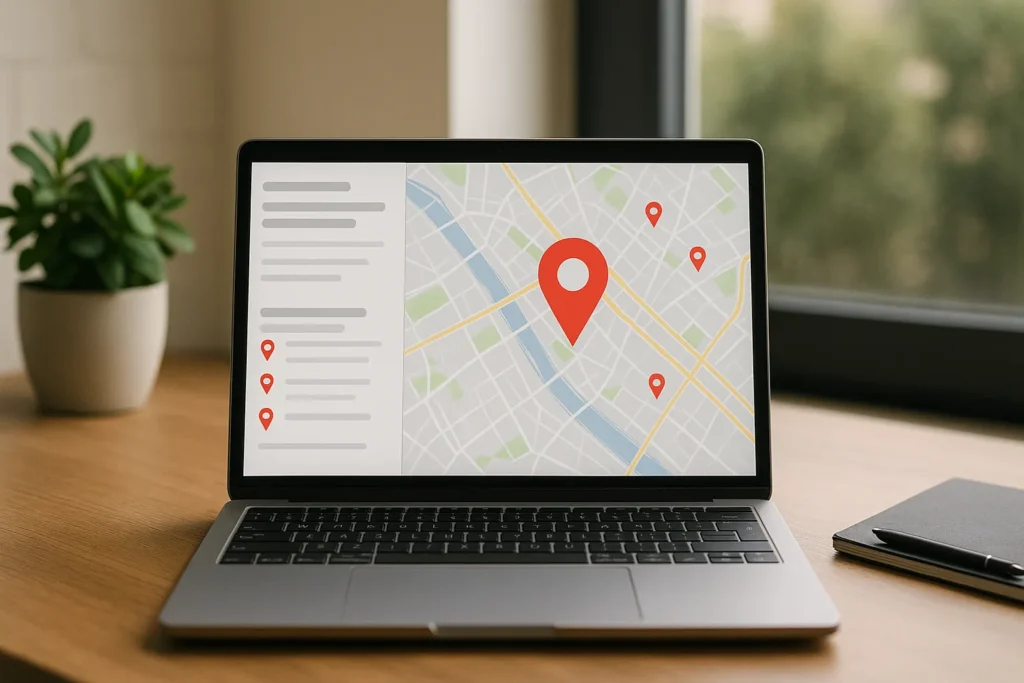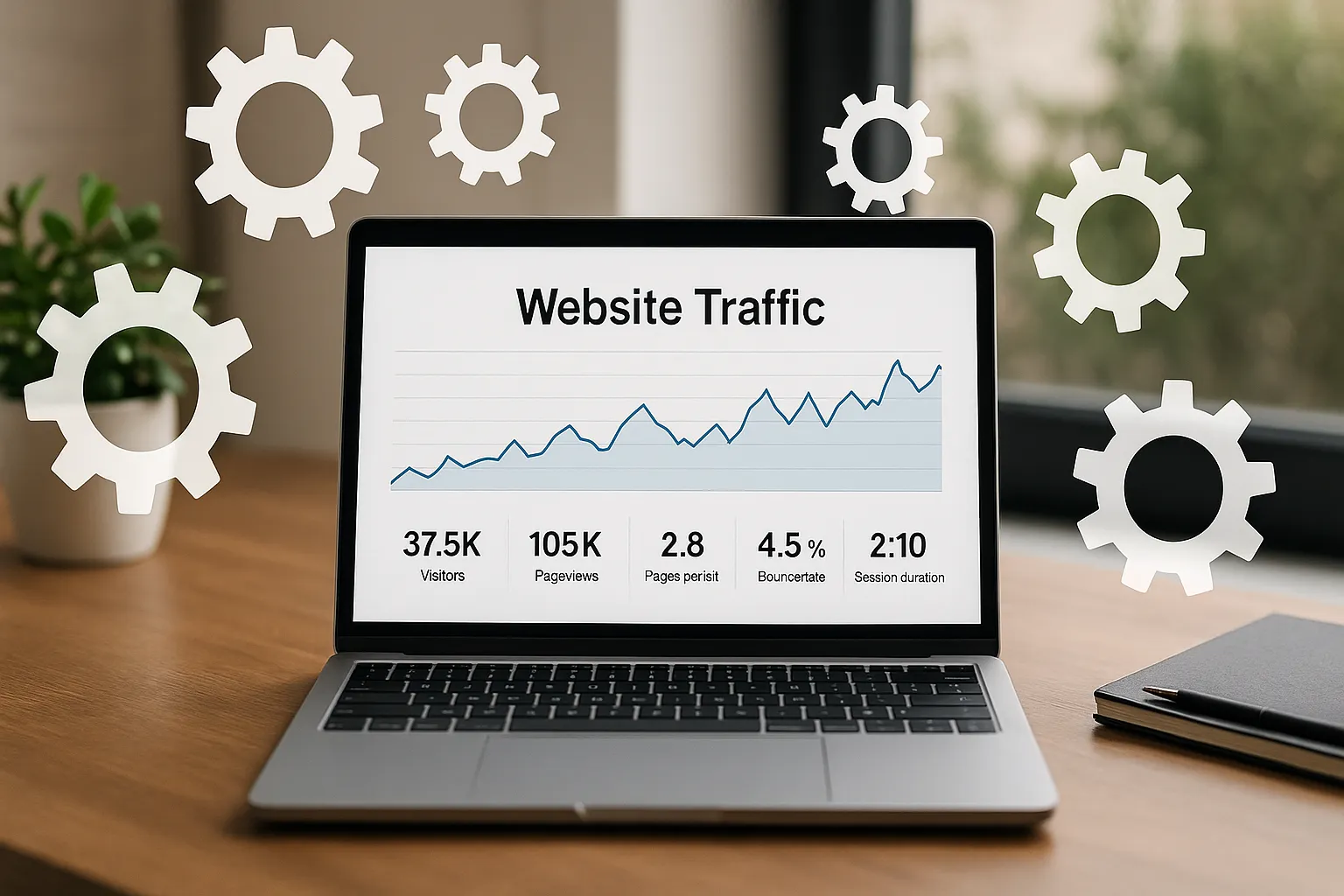5 Simple Fixes That Can Double Your Website Traffic
Most business owners launch their website, thinking customers will just find them. Then reality hits. You’re getting maybe 10 visitors a day, and your competitors seem to show up everywhere in search engines while you remain invisible.
The problem isn’t your business. You’re just missing a few simple pieces that tell search engines your site deserves attention.
This guide shows you five changes that can increase your website traffic to your website in the coming months. You’ll learn how to target search terms that bring in real potential customers, create content that ranks, own your local market, and measure what works.
Keep reading to discover everything you need to know about increasing website traffic without the guesswork.
Target Search Terms Your Competitors Miss
Most Brisbane businesses go after the same crowded keywords and then complain about poor rankings. Everyone wants to rank for “lawyer Brisbane” or “best café,” but those search terms cost a fortune in paid ads and take years to rank organically.
Effective keyword research means finding what your competitors ignore:
Why Longer Phrases Work Better
Long tail keywords are longer phrases that show clear intent.
For example, “Divorce lawyer for military families Brisbane” beats “lawyer” every time because the person searching knows what they need. Bear in mind, the longer phrase faces less competition and attracts people ready to take action.
Finding Keywords You Already Rank For
Google Search Console acts as your free tool for keyword discovery. The platform shows exactly what search terms already bring traffic to your website.
The best part is you’ll find dozens of opportunities hiding in that data. Try pairing the console with basic keyword research tools to check search volume and spot patterns.
Specific Searches Mean Better Results
People using detailed phrases convert at higher rates. The reason is simple: they’re further along in their decision process. That’s why your keyword strategy should target 10-15 solid long tail keywords rather than wasting time on impossible high search volume keywords.
The next step is putting those keywords to work in your content.
Make Your Content Work for Readers and Search Engines

You’ve seen those articles before. They sound mechanical. The writer stuffed in so many keywords that you gave up halfway through.
To be honest, good search engine optimisation means writing for humans first. After all, you want content that answers questions clearly while including the search terms people use. The truth is, Google’s gotten better at spotting content that only exists to game rankings.
Compare these two examples. A bad dental website says, “Our establishment facilitates comprehensive oral healthcare interventions.” A better version says, “We’re a Brisbane dentist. We fix teeth and make sure you don’t dread your next visit.” Both target similar keywords, but only one sounds natural.
The natural version wins because high-quality writing positively impacts your organic traffic. As you are well aware that Google tracks how long people stay on your page. So, pages written at a 7th-8th grade reading level tend to rank higher in search results.
Keep in mind that your content creation approach should solve real problems first. Then fold in blog posts that also satisfy search engine requirements.
But here’s what most Brisbane business owners miss: their local area.
Dominate Local SEO in Your Area

If you’re a Brisbane business competing nationally, you’re making your job ten times harder. Why fight with companies across Australia when you can own your local area? Truth be told, local search engine results pages put you in front of people who can walk through your door today.
Lock down these local SEO (search engine optimisation) essentials to own your area:
- Google Business Profile setup: Start by claiming your Google Business Profile. Fill out every section with all the necessary details. Google pulls this information when showing your business in local search results and maps. The more complete your profile, the better you’ll rank in searches nearby.
- Match your NAP everywhere: Your Name, Address, and Phone number need to match exactly across every website and directory. Sounds boring, but different versions confuse search engines. This confusion drops your rankings and costs you visibility in relevant searches that could bring in customers.
- Location-specific content: Write blog posts about local events, neighbourhood guides, or area-specific problems you solve for your target market. For example, A Paddington café writing about “best breakfast spots in Paddington” will always outrank generic food content. Basically, the local angle makes all the difference.
- Local backlink building: Getting mentioned on Brisbane news sites, chamber of commerce pages, and community blogs helps more than you’d expect. These relevant backlinks tell search engines you’re genuinely connected to the local business community. Each link builds your authority in the area.
- Customer review collection: Reviews on your Google Business Profile do double duty. They improve your local SEO rankings and give potential customers the confidence to choose you over competitors. You should make asking for reviews part of your standard process after completing each job or sale.
Once you’ve locked down your local presence, you need to know if it’s working.
Track What’s Working With Free Analytics
How do you know which digital marketing strategy brings in more website traffic if you’re not measuring anything? You don’t. Running a business without tracking your numbers is like driving with your eyes closed. Luckily, Google Analytics makes tracking simple.
It’s because Google Analytics shows you exactly where your visitors come from and what they do on your site:
Set Up This Free Tool in Under 10 Minutes
Google Analytics sounds complicated, but setting it up takes less time than making a coffee. You create a free account and add a small piece of code to your website. That’s it.
The platform starts collecting data right away. Within minutes, you can see which pages get traffic and where your visitors come from.
Three Numbers Every Business Owner Should Watch
Start with traffic sources. This metric shows whether people find you through organic search, paid ads, or social media. Next comes your bounce rate. High numbers mean visitors leave immediately instead of sticking around to read your content.
Finally, track conversions. It helps you understand which pages turn browsers into customers or leads. These three numbers tell you what’s working and what isn’t.
Turn Data into Decisions
Google Search Console pairs with Google Analytics to show your site’s performance. The console reveals which search terms bring traffic to your website and spots technical SEO issues like broken links. We recommend you use both tools together, and you’ll know what’s working and what needs fixing.
Sometimes the data shows you need help beyond what you can handle yourself.
When It’s Time to Bring in SEO Services

There’s no shame in admitting SEO isn’t your specialty. You’ve got a business to run. Between managing staff and handling customers, you don’t have time to become an SEO expert, too.
Have you considered hiring a Brisbane SEO agency? If you’re spending hours on technical SEO tools that confuse you. We believe its time you get hiring.
A good SEO agency handles technical audits, content strategy, and link building while you focus on your business. One thing you need to keep in mind is that professional SEO services cost money upfront. But the return on investment (ROI) shows up when organic traffic doubles and customers start calling.
Fortunately, Brisbane SEO experts understand the local market better than generic agencies. Also, the right partner improves your search rankings long term.
Start Increasing Your Website Traffic Today
Doubling your website traffic starts with the five fixes we’ve covered. Find search terms your competitors miss and write human content that ranks. As advised, dominate local SEO in Brisbane, then track what works with Google Analytics.
Small changes add up faster than you think. Your SEO strategy doesn’t need to be perfect today. It just needs to exist.
At Website Traffic Increaser Guy, we help Brisbane businesses get more visitors and turn them into customers who actually buy. Our SEO team handles keyword research, content creation, technical SEO, and everything else while you run your business.
Ready to see what’s holding your site back? Grab your free website evaluation today and get a clear roadmap for driving more traffic.
